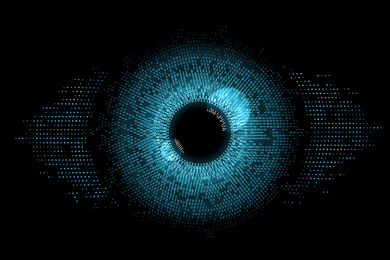Space shuttles often carry payloads weighing many tons, but the shuttle Discovery, now orbiting earth after last Friday's launch, is ferrying a piece of metal the size of a needle for release into orbit. That and five other small objects will help calibrate the Lincoln Laboratory Haystack radar and other facilities that detect orbiting space debris.
The release of the objects, one of several tasks to be performed during this mission, is part of NASA's program to chart the debris that has been orbiting Earth in increasing amounts since the late 1950s. Those objects-which range in size from nuts and bolts to old satellites and rocket stages-pose a potential threat to the planned space station Freedom because of its large size and lengthy stay aloft.
About 7,000 manmade orbiting objects are routinely tracked, but there are many times that number circling Earth, and most are quite small. But even something tiny could inflict significant damage, since everything moves at very high speeds. "A very small object with little mass at such high velocity has lot of kinetic energy," explained Dr. Israel Kupiec, associate group leader of the Radar Imaging Techniques group at Lincoln Laboratory. It has been estimated that a marble-size object orbiting at a minimum velocity of 7 km/sec would have the force of a locomotive hitting at 60 mph if it were to strike another object head-on, he said.
The Haystack Long-Range Imaging Radar managed by Lincoln Laboratory is the country's primary facility for detecting objects in orbit and gathering information about their estimated size, velocity, altitude and direction of travel. However, since debris comes in all different sizes and shapes, calibrating radar to determine dimensions accurately from the radar cross-sections it detects can be difficult, Dr. Kupiec said.
To aid the LRIR and other radar facilities and telescopes around the world, the shuttle will release three spheres (one each in diameters of two, four and six inches), and three dipoles-needle-like pieces of metal 1.7 to five inches long and only 10 to 40 mils wide, or about the thickness of piano wire. Unlike spheres, which appear the same regardless of the angle from which they are viewed, the dipoles don't look the same from all directions, so radar can thus be calibrated in two different polarizations, Dr. Kupiec said.
Last spring, the shuttle released six small spheres, and others sent aloft many years ago are also being tracked. This is the first time a non-spherical object has been put in space for the purposes of calibrating the orbital debris data. On future shuttle missions, other irregularly shaped items such as discs and bolts could be released, allowing scientists at Lincoln Laboratory and elsewhere to "slowly build up a database of odd shapes that help us calibrate the conversion of radar cross-sections to actual dimensions," Dr. Kupiec said.
Scientists eventually hope to refine their equipment to the point where the material as well as the dimensions of objects can be detected. By knowing whether something is plastic as opposed to metal, for example, they can make a good estimate of its mass and thus the force with which it would strike another orbiting object such as the space station.
A version of this article appeared in MIT Tech Talk on February 8, 1995.





